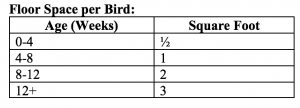What Makes a Good Automatic Chicken Coop Door?

There are a few things to consider when picking out an Automatic Chicken Coop Door. You may have a unique size coop, plans to expand your flock in the future, or simply want to a unique feature on the door. Whatever the case here is an article of things to consider when choosing an Automatic Chicken Coop Door our top rated door to choose from online.
TOP RATED DOORS
Reviews and testimonials can be a great tool when researching online but often times these can be misleading or paid for. Unfortunately for this reason we went online and purchased more than 21 model Automatic Chicken Coop Doors and made our decisions based on our findings over a one year period of use.
DOOR SIZE
One of the first things you will need to consider when choosing your chicken coop door is the size. The door size will mostly depend on your coop, so you will need to measure it before you get started. Most chicken coops have a 10” x 10” entrance, but some can be as small as 9 inches and as large as 13 inches. If you are building a coop, we recommend a larger size around 11” x 13”.
CLEARANCE
You will also need to measure the space above the door to ensure enough clearance to install the mechanism that will raise the door. If your entrance is 12 inches high, you will need at least 12 additional inches above the hole for the door to lift out of the way. You will also need another few inches for the motor. The more space you have, the more choices. If you don’t have enough space above the door, you may need to look for a brand that opens sideways.
CONTROLLER
You may decide the best means for your coop door is remote control, timer operations, wifi, solar eye, manual operation switch. In either case you should be aware of solar eye doors. These are generally a cheaper design and can cause the door to close early on the chickens locking them outside the coop leaving them vulnerable to predators. Timer, remote control, and wifi controllers are the safest means for chicken coop doors.
Timers allow you to set an exact time that the door will open and close regardless of how high the sun is. Timers help keep your chickens safer by opening the door a little later than a light sensor when there is a better chance the predators are gone.
AUTOMATIC DOOR TYPE
Most of the devices on this list are the type that uses a strong motor to pull a thick string that raises and lowers the door. The door is in a track on either side, so it stays in position as it opens and closes. Other types might use hydraulics or gears to move the door. These designs can be dangerous as they force the door shut which can cause injury to chickens if they stay underneath them. For this reason a door with a lift string is highly recommended to lift and lower the door with a lift string and gravity fed so there will never be injury to your flock. The type you choose is a personal preference, but we recommend the string because if it breaks, it’s easy to fix, and this type is usually less expensive and easier to install.
CONCLUSION
When choosing your next automatic chicken coop door, we highly recommend our pick for the best overall. The Premium Timer Operated Automatic Chicken Coop Door is easy to install and operate. It has timer capability and the timer can easily be unplugged or replaced if another controller is desired at a later time, so you can use whatever is more convenient. It has a large door and uses durable materials. Another smart choice is our pick for the best value, the Metal Timer Operated Automatic Chicken Coop Door It has durable design and a large door, and it’s easy to set up and customizable for your coops needs.
We hope you have enjoyed reading over these reviews and have found a few models you haven’t heard of before. If we have helped you keep your chicken coop safer, please share this on Facebook and Twitter.
Article Prepared by Jeremy Smith with Free Range, Inc.
Over 30 years experience in free range poultry farming.


 There are a number of things that lurk in the shadows waiting for the chance to get your chickens…
There are a number of things that lurk in the shadows waiting for the chance to get your chickens…
 1. After constructing the fence wrap it in chicken wire to keep smaller critter like mink, weasels, and cats from getting through it. Mink only need a small hole of
1. After constructing the fence wrap it in chicken wire to keep smaller critter like mink, weasels, and cats from getting through it. Mink only need a small hole of 


